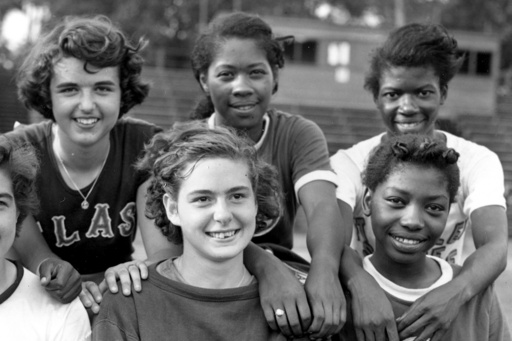Mabel Staton, a remarkable figure in track and field and a trailblazer for racial equality, passed away at the age of 92 on Thursday. Staton made history as the first and only woman from the United States to compete in the long jump at the 1952 Helsinki Olympics. At the time of her death, she was remembered as a pioneering athlete who overcame significant barriers in a segregated society.
Staton, known as Mabel Landry when she was a student at DePaul University in the 1950s, participated in athletics before the establishment of a women’s track team at the institution. In 2011, she was honored with an induction into DePaul’s athletic Hall of Fame. The university’s senior associate athletic director, Thad Dohrn, confirmed her passing, which followed a prolonged struggle with cancer, as informed by Landry’s daughter.
As the only American woman who qualified for the Olympics in her event prior to the Helsinki Games, Staton finished seventh, achieving a personal best jump of 5.88 meters (19 feet, 3 1/2 inches) during the qualifying round. For a brief time, this jump placed her as the Olympic record holder, until New Zealand’s Yvette Williams surpassed it with a jump of 6.16 meters (20 feet, 2 1/2 inches) later in the same round.
In a recent interview, Staton reflected on her Olympic experience, stating, “Being on the Olympic team was not about winning; it was about taking part.” Her journey in athletics began in her childhood on Chicago’s South Side, where she participated in the Catholic Youth Organization.
When she was a teenager, her coach invested in her future by purchasing her a berth in a sleeper compartment for a train journey to Texas, where she would compete in her first national AAU meet. However, upon the train crossing the Mason-Dixon Line, she was informed by a conductor that she would have to vacate her compartment and sit with other Black passengers. This incident led to a civil rights lawsuit by the CYO against the Illinois Central Railroad, which they won. The victory provided Staton with the resources to establish an interracial track team, considered the first of its kind in the Midwest.
Reflecting on her experiences in a segregated society, Staton remarked, “Living in the era of segregation wasn’t a bed of roses. What helped me was my faith and the support of family, coaches and teammates.” Throughout her illustrious career, she secured four national titles in long jump and was a key member of the U.S. 4×100-meter relay team that triumphed at the 1955 Pan American Games.




